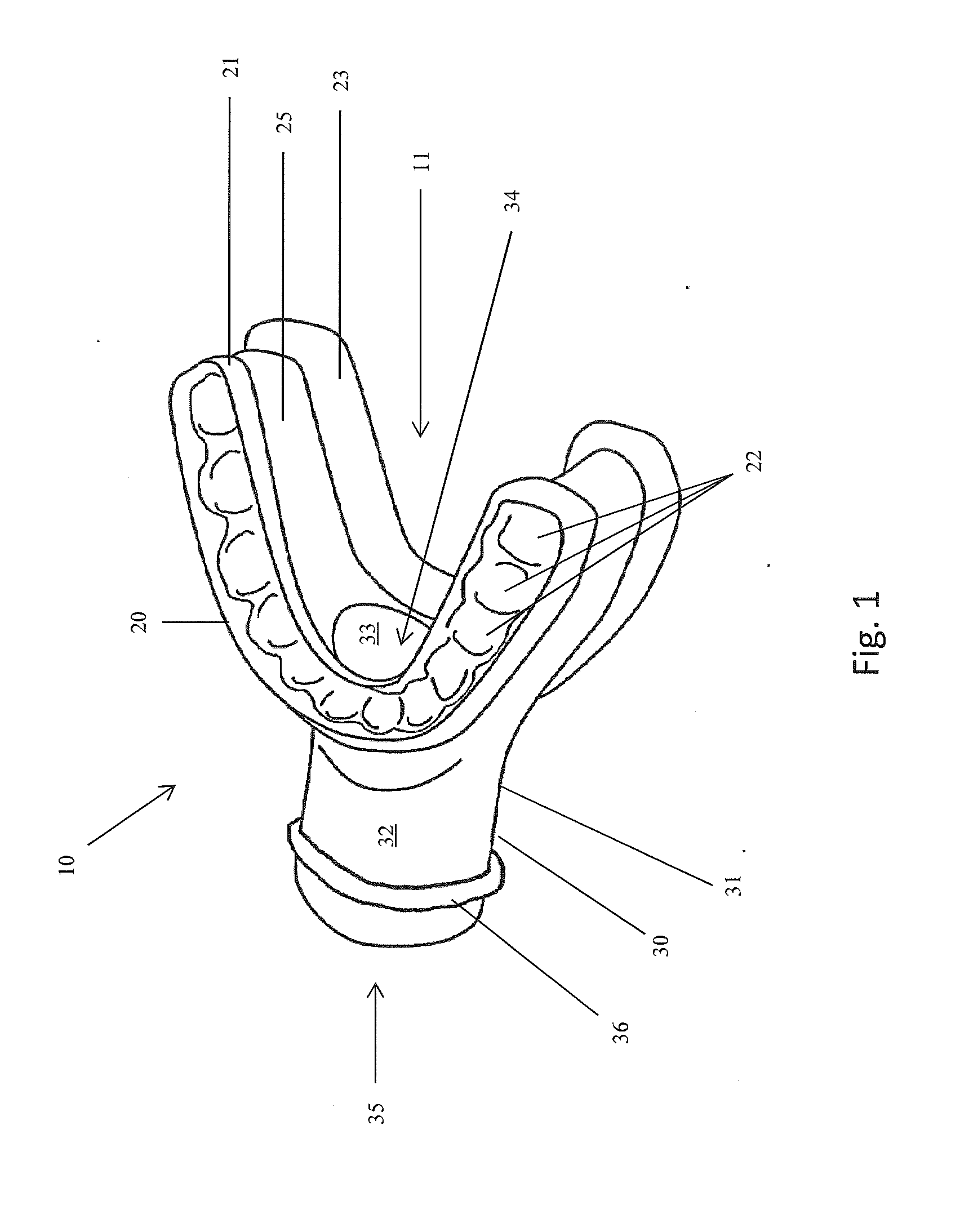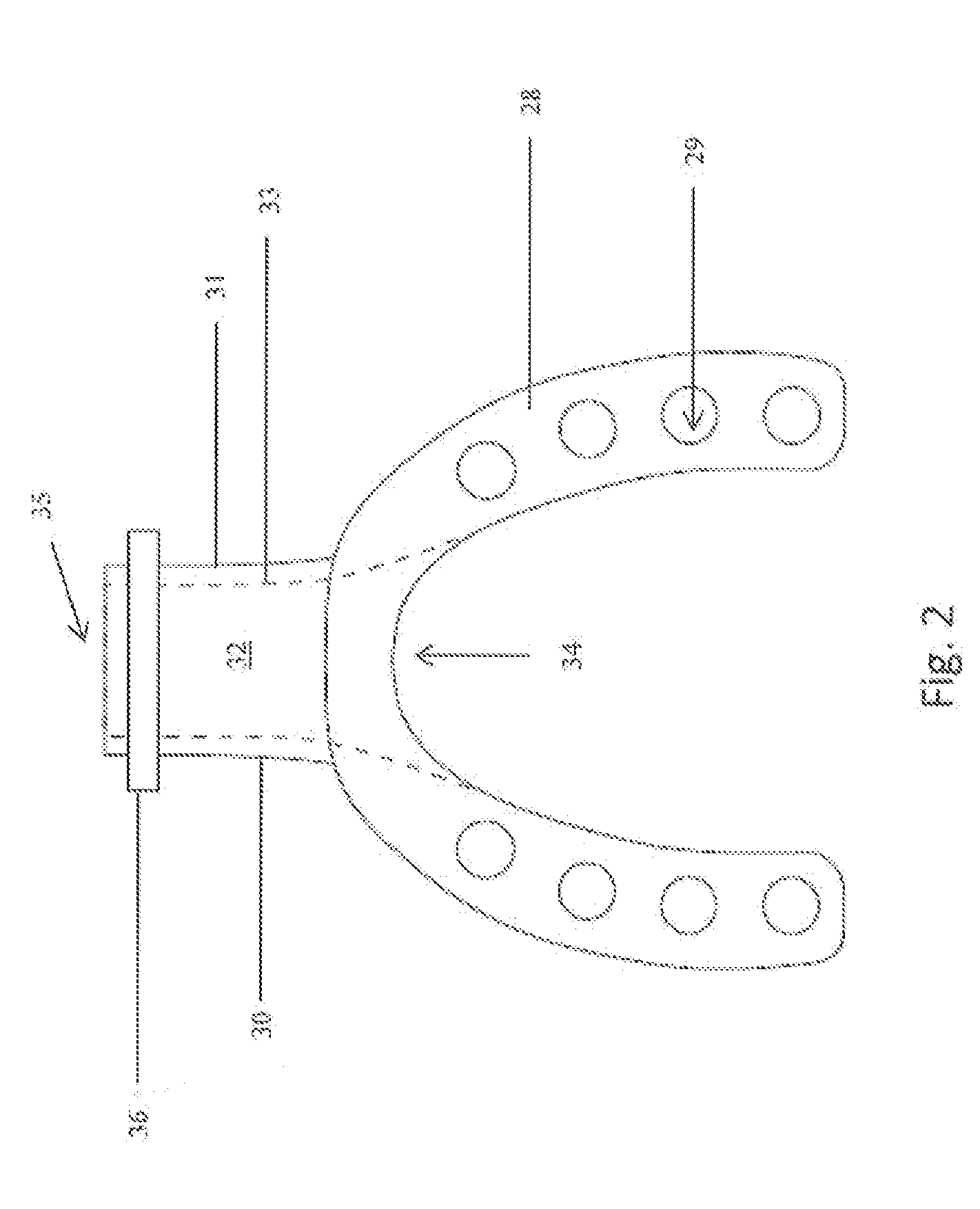Intraoral mandibular advancing positive pressure apparatus
a positive pressure, intraoral technology, applied in non-surgical orthopedic devices, snoring prevention, other nursing devices, etc., can solve the problems of serious and deadly consequences, poor long-term compliance of patients, and disfavored surgery
- Summary
- Abstract
- Description
- Claims
- Application Information
AI Technical Summary
Benefits of technology
Problems solved by technology
Method used
Image
Examples
Embodiment Construction
[0022]FIGS. 1 and 2 disclose the intraoral mandibular advancing positive pressure appliance 10 comprising a mouthpiece 20 and breathing tube connector 30. The mouthpiece 20 comprises a maxillary portion 21, mandibular portion 23, sealing portion 25, and molding support 28. Maxillary portion 21 is generally shaped in the form of an arch and contains impressions of a portion of a patient's upper teeth 22. Mandibular portion 23 is generally shaped in the form of an arch and contains impressions of a portion of a patient's lower teeth 24 (as seen in FIG. 3). Molding support 28 is generally arch shaped contains openings 29 and is positioned between maxillary portion 21 and mandibular portion 23. Sealing portion 25 connects maxillary portion 21 and mandibular portion 23 through the openings 29 of the molding support 28. Sealing portion 25 connects maxillary portion 21 and mandibular portion 23 to create a seal between maxillary portion 21 and mandibular portion 23. The maxillary portion 2...
PUM
 Login to View More
Login to View More Abstract
Description
Claims
Application Information
 Login to View More
Login to View More - R&D
- Intellectual Property
- Life Sciences
- Materials
- Tech Scout
- Unparalleled Data Quality
- Higher Quality Content
- 60% Fewer Hallucinations
Browse by: Latest US Patents, China's latest patents, Technical Efficacy Thesaurus, Application Domain, Technology Topic, Popular Technical Reports.
© 2025 PatSnap. All rights reserved.Legal|Privacy policy|Modern Slavery Act Transparency Statement|Sitemap|About US| Contact US: help@patsnap.com



